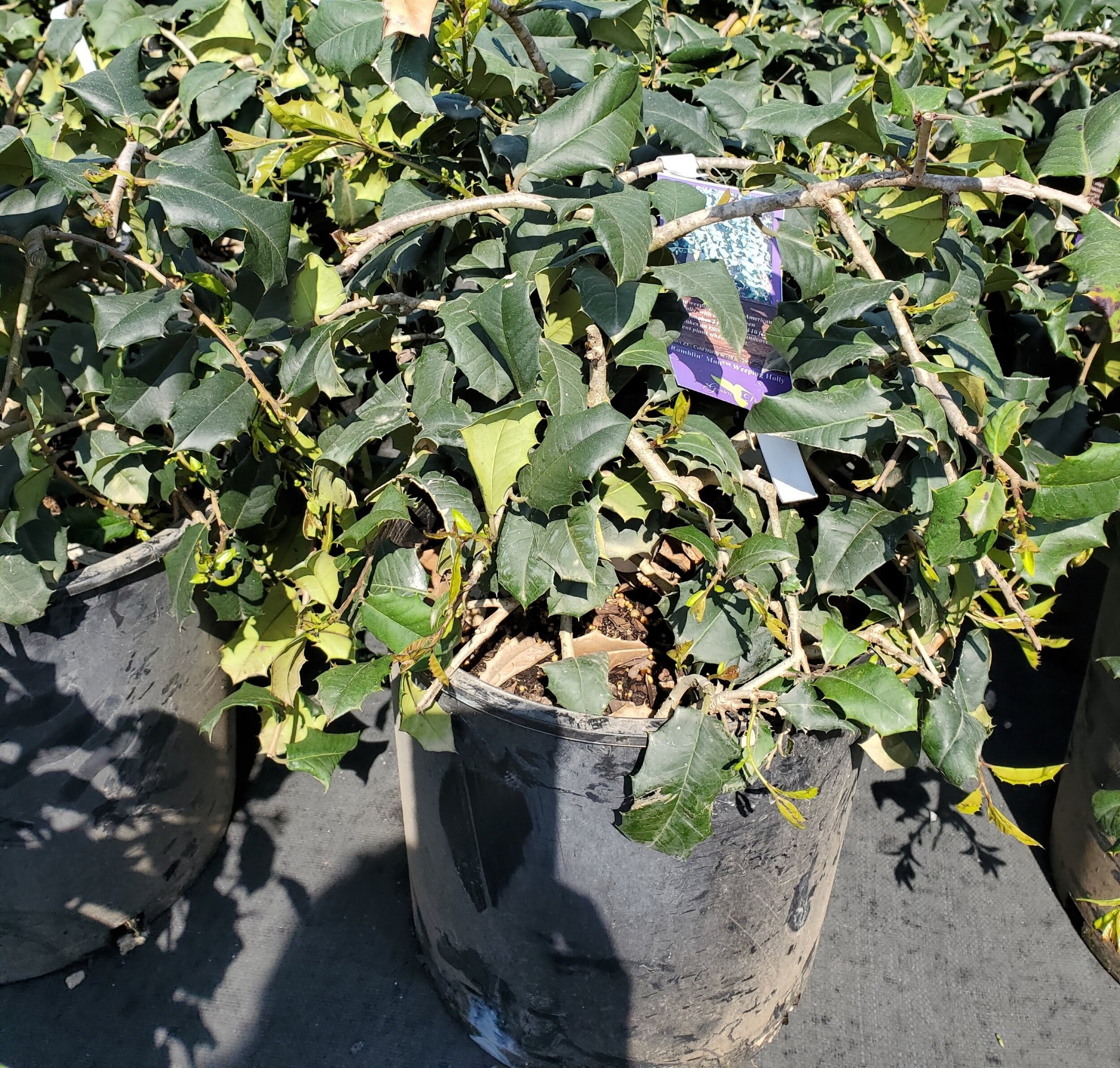Recently, several gardening friends and I climbed into our cars (and truck) for a trip to Head-Lee Nursery in Seneca, SC. I was fortunate enough to run into Bill Head (who introduced Wisteria frutescens ‘Amethyst Falls’, a well-behaved sterile vine with beautiful purple blooms but none of the nasty invasive qualities of Wisteria chinensis). I asked which were his favorite new plants for 2021, and he named two. One of these was Ilex opaca ‘RLH-I0-1’. Before you yawn and dismiss this as “just another holly, let me say that there is nothing “average” about Ramblin’ Man™ Weeping Holly. You read that correctly: It is a weeping form of our native American Holly.
Ramblin’ Man™ will spread to ten feet wide but no more than two feet tall. Use it as a groundcover or an accent. I snapped the accompanying photograph of the plant in a nursery container. The weeping stem habit is evident. This is such a new intro that cultural information is scant on the internet, but it is safe to assume that this holly will enjoy the same cultural conditions as other Ilex opaca: full sun to mostly sun; moist, acidic soil; zones 5-8. American Holly has leathery, evergreen leaves. It tolerates neglect and is not normally browsed by deer.
The second recommended shrub was Clinopodium georgianum ‘Sweet Savannah™ Calamint.’ I expected a plant with the gray-green leaves of a Nepeta, but Sweet Savannah™ has deep green, aromatic foliage. This beauty is only 12 inches tall but will spread to 30 inches wide, in sun to part shade. A member of the mint family, it is cold hardy down to twenty degrees. It is a great plant for short hedges or foundation plantings. In autumn, it is covered with attractive lavender flowers. Mr. Head shared a photo of the plant in bloom, shown below. This improved native checks all the boxes: easy to grow, deer resistant, pollinator friendly, heat and drought tolerant.
Calamint is the Perennial Plant Association’s 2021 Perennial of the Year.
Ilex opaca ‘Ramblin Man’
Sweet Savannah Calamint





